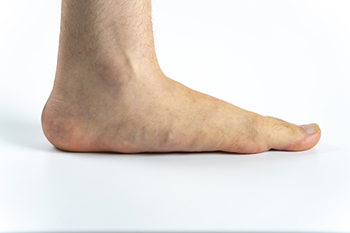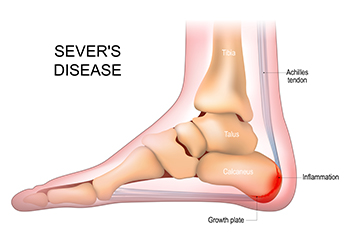
Flat feet, also known as fallen arches, can be a source of discomfort and pain for many individuals. Understanding the causes and available treatment options is a good way to manage this condition effectively. Genetics can play a role in the development of flat feet, as some people simply inherit the tendency from their parents. With age, the arches of your feet may gradually flatten as ligaments and tendons loosen and muscles become weaker. Trauma to the foot, such as a torn tendon, also can lead to flat feet, and excess weight puts added stress on the feet that may lead to arch collapse. Hormonal changes and weight gain during pregnancy often contribute to flat feet. Treatment options for flat feet include orthotic shoe Inserts that provide arch support and alleviate discomfort. Certain exercises can strengthen the muscles supporting the arch. Choosing supportive, well-fitted shoes is essential, as is maintaining a healthy weight to reduce stress on the feet. For help with addressing the discomfort from flat feet, it is suggested that you make an appointment with a chiropodist for an exam and the appropriate treatment options.
Flat feet are a common foot condition. If you are experiencing pain or discomfort due to flat feet, please consult with one of the chiropodists from The Footcare Centre. Our chiropodists will assess your condition and provide you with quality foot and ankle treatment.
What Are Flat Feet?
Flat feet are feet that do not have a well-defined arch in the middle of the sole of the foot. Flat feet may be flexible or rigid. Flexible flat feet have an arch when there is no pressure put on the foot, such as when one is sitting, but the arch disappears upon standing. Rigid flat feet lack an arch regardless of whether one is standing or not.
Causes
Flat feet can be present from birth or acquired over time due to a weakening of the ligaments in the arch. Sometimes flat feet are caused by illnesses, injuries, or pregnancy.
Symptoms
Flat feet often cause no noticeable symptoms. However, some people may experience pain and discomfort due to their flat feet.
Symptoms associated with flat feet include:
Pain in the arch, heel, ankle, or along the outside of the foot
Overpronation of the foot
Shin splints
Aching or fatigue in the feet or legs
Pain in the knees, hips, or lower back
Treatment
In cases where flat feet cause symptoms, there are various treatments available. Wearing orthotic inserts in your shoes to provide more arch support, performing stretches, and taking medications may improve your symptoms. If you are overweight, losing weight can help relieve pressure on the feet. In severe cases, surgery may be considered.
If you have any questions, please feel free to contact our office located in . We offer the newest diagnostic and treatment technologies for all your foot care needs.





